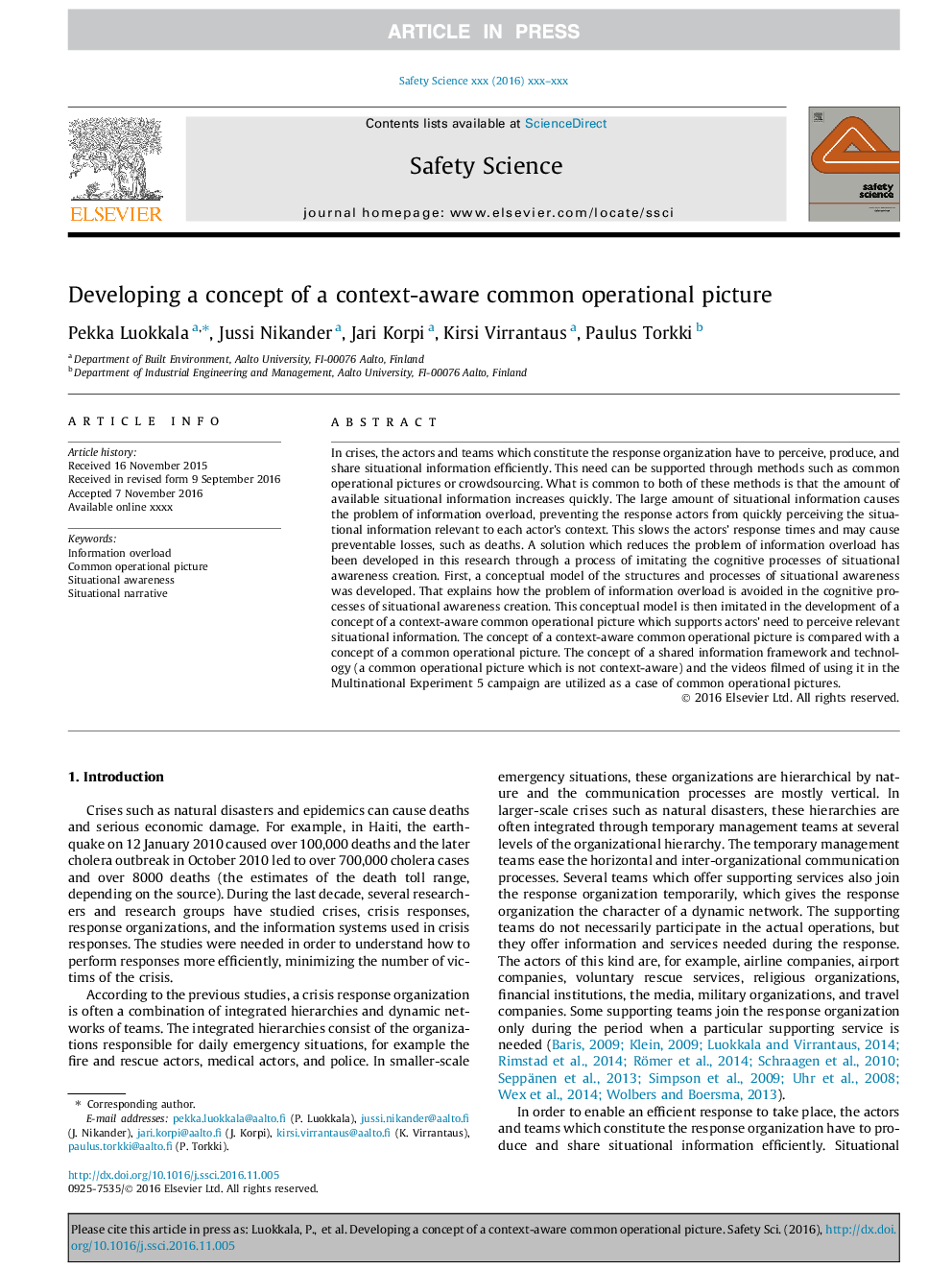| Article ID | Journal | Published Year | Pages | File Type |
|---|---|---|---|---|
| 4981297 | Safety Science | 2017 | 19 Pages |
Abstract
In crises, the actors and teams which constitute the response organization have to perceive, produce, and share situational information efficiently. This need can be supported through methods such as common operational pictures or crowdsourcing. What is common to both of these methods is that the amount of available situational information increases quickly. The large amount of situational information causes the problem of information overload, preventing the response actors from quickly perceiving the situational information relevant to each actor's context. This slows the actors' response times and may cause preventable losses, such as deaths. A solution which reduces the problem of information overload has been developed in this research through a process of imitating the cognitive processes of situational awareness creation. First, a conceptual model of the structures and processes of situational awareness was developed. That explains how the problem of information overload is avoided in the cognitive processes of situational awareness creation. This conceptual model is then imitated in the development of a concept of a context-aware common operational picture which supports actors' need to perceive relevant situational information. The concept of a context-aware common operational picture is compared with a concept of a common operational picture. The concept of a shared information framework and technology (a common operational picture which is not context-aware) and the videos filmed of using it in the Multinational Experiment 5 campaign are utilized as a case of common operational pictures.
Related Topics
Physical Sciences and Engineering
Chemical Engineering
Chemical Health and Safety
Authors
Pekka Luokkala, Jussi Nikander, Jari Korpi, Kirsi Virrantaus, Paulus Torkki,
